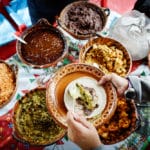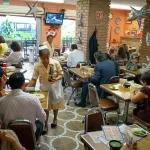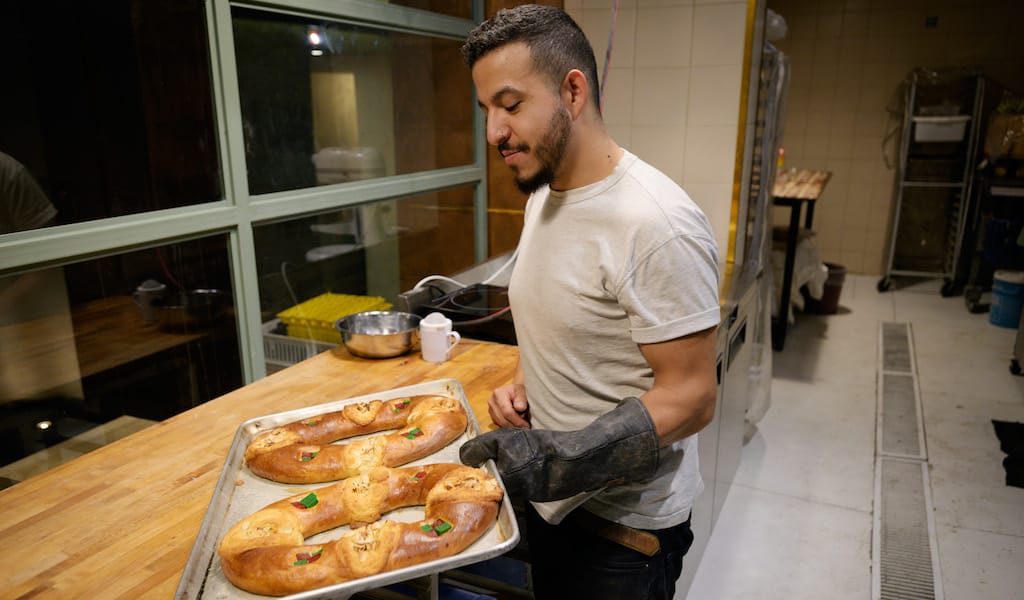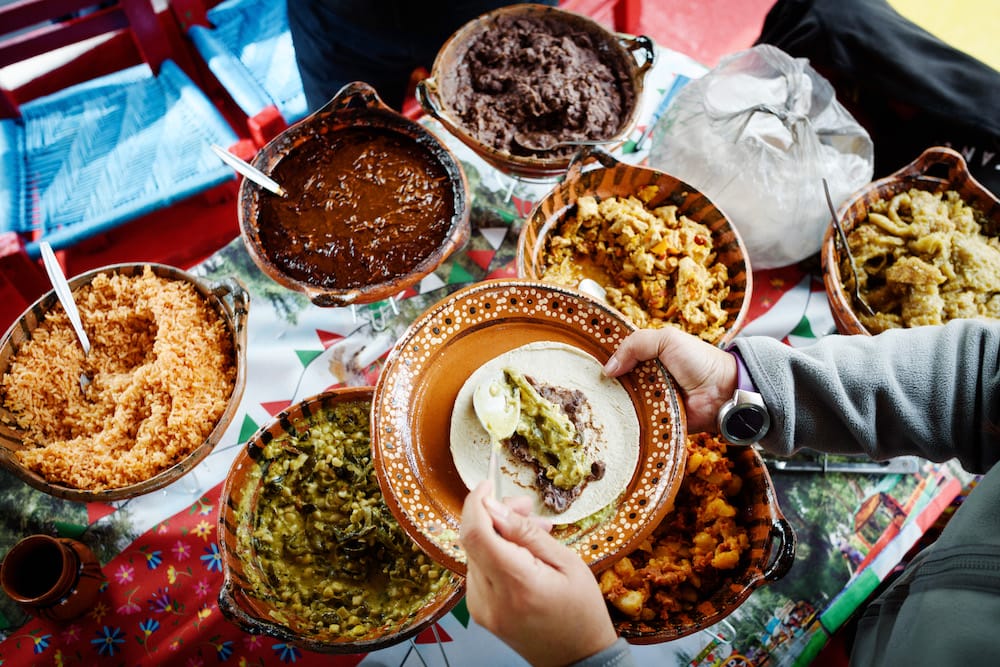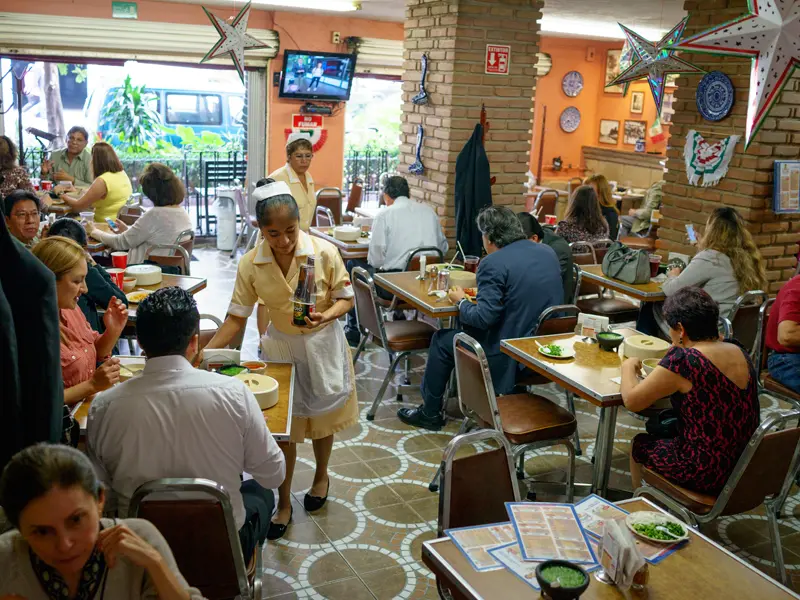It has been a bitter pill to swallow, but we’ve long accepted the fact that we’ll likely never find proper Mexican food in Istanbul. What is available registers as sub-par Tex-Mex at best: hard-shell tacos, salsa that packs no punch, weak margaritas and the inevitable cactus/sombrero-dominated décor found in underwhelming Mexican-themed restaurants worldwide.
A lack of understanding of the cuisine is as equally to blame as the scarcity of key Mexican staples in Turkey: corn tortillas, cotija cheese, good avocados, black beans and fresh cilantro, to name a few. Some of these ingredients can be found at specialty supermarkets or neighborhood organic bazaars if one is up for a tedious scavenger hunt, others are just unavailable full stop.
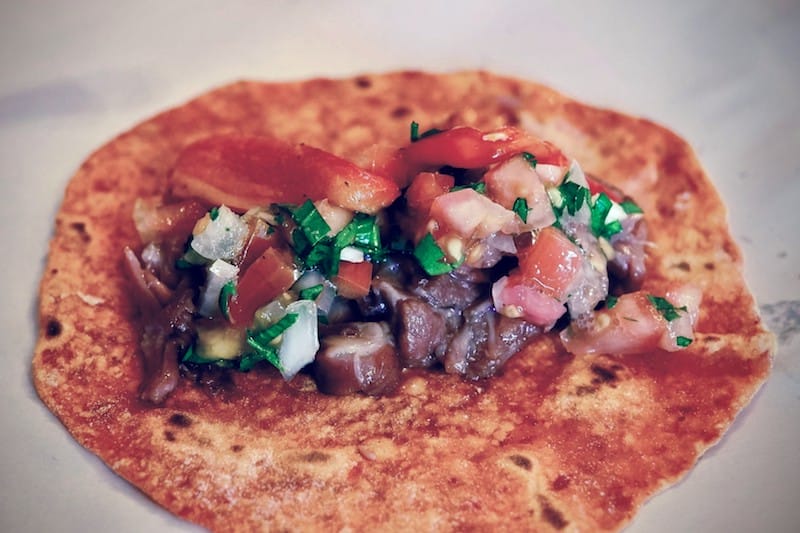
Istanbul doesn’t have to be doomed to an existence free of good Mexican food – it is possible to get the right ingredients on this side of the world. Take a look at Madrid, where the tacos al pastor are so good that people line up around the block every day just to snag some. While Spain of course has a sizable Latin American immigrant population, lack of demand is perhaps the ultimate issue in Istanbul: After all, the city’s staggering array of restaurants representing every region of Turkey could keep one busy for a lifetime.
Needless to say, our interests were piqued when we were tipped off that someone in the southeastern city of Diyarbakır was making an enticing regional riff on the taco. The photos looked alarmingly promising and we were thrilled by the initiative. If it couldn’t be done in Istanbul, as implausible as it seems, perhaps it was Diyarbakır’s chance to finally do justice to Mexican food in Turkey? On a visit to the opposite corner of the country, to Turkey’s Kurdish cultural capital, we took the opportunity to dig in.
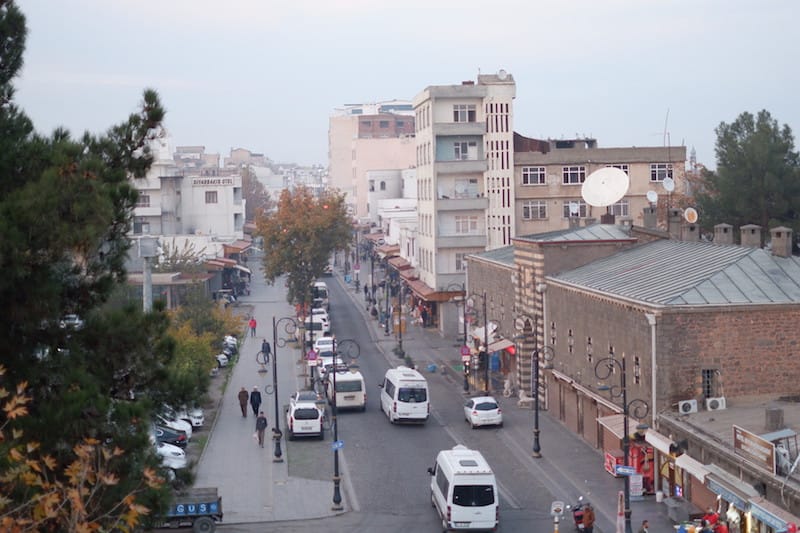
Bringing the Yucatán to the Sur
The historic heart of Diyarbakır is framed by an extensive stretch of severe, hulking basalt defensive walls that make up the city’s Roman-era fortress. The Sur (city wall) district is nestled within and is home to the city’s most iconic historic landmarks, markets and restaurants. The alluring cobblestone backstreets are an urban explorer’s dream, especially for those who don’t mind getting lost in a maze. Bustling by day, most of Sur closes down relatively early in the evening, and many of the narrow streets become pitch black. For those wanting to tuck into skewers of Diyarbakır’s famous grilled lamb liver, it’s recommended to go before 6pm.
If it couldn’t be done in Istanbul, as implausible as it seems, perhaps it was Diyarbakır’s chance to finally do justice to Mexican food in Turkey.
Not as easy to find in area restaurants these days is boçik. Kurdish for oxtail, the meat is cooked slow, from morning until evening and served tender in its own juices. At Amedîtan (formerly Yek Boçik), a cozy, four-table restaurant on the main street in Sur adjacent to a pharmacy and a hotel, owner Serdil Demir began serving the dish when he opened last year.

Serdil is a 30-something who calls Diyarbakır home, though he hails from the neighboring province of Mardin. A computer engineer by trade, Serdil has an endless appetite for travel and gastronomy, adventures that have taken him across the globe to more than 50 countries, more specifically to Mexico in 2016. It comes as no surprise that when Serdil returned to Diyarbakır in 2018 and opened a small restaurant that his travels would prove influential in the cuisine, though he initially set out to serve only boçik. Our only encounter with oxtail (pöç in Turkish) came in the Central Anatolian city of Kayseri, where it is a regional specialty, served on the bone alongside rice and vegetables.
“There used to be two places that made boçik, but the one that prepared it the way I like closed down. I started making it more at home and I realized that it wasn’t very well known in the city. There was almost no one who tried it and didn’t like it. When I first opened up shop, I wasn’t serving tacos, just boçik over rice and in sandwiches,” he said. It wasn’t long before memories of feasting on home-cooked cochinita pibil (roast pork, typically cooked inside a banana leaf) tacos while traveling Mexico’s Yucatán started to drift into the kitchen. Serdil recalled the similarity in preparation and serving techniques between cochinita pibil and boçik: both were slow-cooked for hours, separated in strips without using a fork or knife, and eaten between circular flatbread.
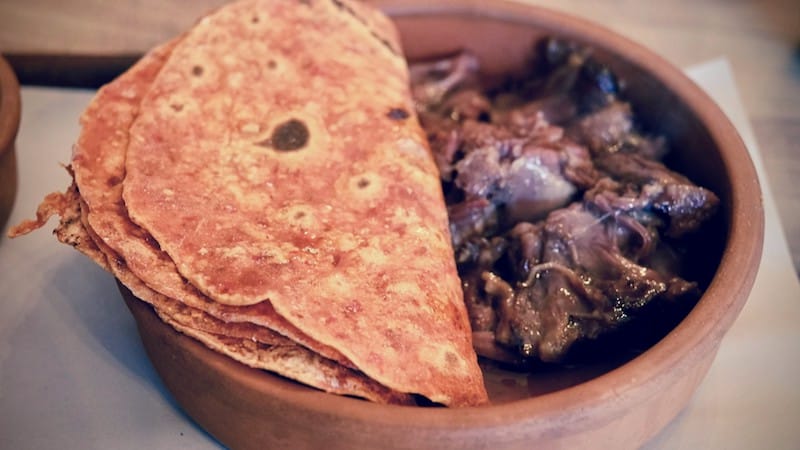
He tried his hand at making tortillas with a southeastern Anatolia flair, using wheat to create a dough that has a slight orange hue from the addition of salça (tomato and pepper paste). They were a hit at Serdil’s home, and soon became the focal point of Amedîtan. When Serdil presented us with a small platter that managed to be simple, refined and tantalizing at all once, we couldn’t wait to dive in. The slow-cooked strips of boçik rested in a small clay pot and beamed juicily. Adjacent were his homemade tortillas, by far the closest thing we’ve seen to proper corn tortillas in Turkey, even though they were made from a different grain entirely.
The condiments were simple: a salad that looks and tastes just like pico de gallo and a blend of roasted peppers, pickled peppers and caramelized onions that add a blast of flavor and spice without stealing the show from the savory, moist and tender boçik. We quickly assembled three tacos and scarfed them down just as fast.
Grappling With a New Diyarbakır
Not only was it a bold move to open up a shop with such a concept in the middle of a pandemic, the Sur district itself is still reeling from the trauma of an outbreak of urban warfare between Kurdistan Workers Party (PKK) militants and Turkish security forces after a peace process collapsed in 2015. The skirmishes resulted in the destruction of a huge part of Sur, lying right on the other side of the most-visited touristic sites in the district, just a few minutes on foot from the main avenue on which Amedîtan is located. Now, the demolished area is no longer cordoned off, and new construction has brought an array of lackluster buildings. They were built in a questionable attempt to blend in with the cultural framework of Sur, though they stand out like sore thumbs.
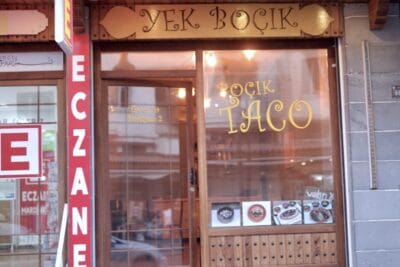
With years passed since that devastating conflict, which drove tens of thousands of people out of their homes in Sur, the district and the city as a whole has tried to regain its image as a desirable visitor’s destination, one it absolutely still deserves. Restaurants, bars and hotels have popped up in Sur to meet the demand of the returning tourists. Serdil has taken a bold leap and business has been slow, but it seems that no one who tries his boçik tacos leaves unsatisfied. Notwithstanding, the grim realities of the near past are a source of continual pain, strife and constitute major obstacles for small businesses and residents alike.
Still ever resourceful and passionate about gastronomy, Serdil alongside his cousin also produces excellent wine from grapes native to the region. Their rosés and reds are bold, surprising and excitingly drinkable. They are still small-scale and are not licensed to sell, but we look forward to what would be an excellent addition to Turkey’s ever-expanding boutique wine scene once they inevitably expand their operations.
“As I observed the effects of nature on different continents, I began to better understand the conditions of nature where I grew up. When thinking about food, drinks and ingredients, I find myself questioning the climate, geography, chemistry, nature and also myself,” Serdil tells us. His passion for travel and the cuisine of the world as well as the regional tastes of homeland gave birth to Amedîtan, a blessing for those desperately missing tacos in Turkey – and who don’t mind zipping across the country to partake in this scarce delicacy.
Editor’s Note: Starting Fall 2023, Amedîtan is open only for dinner reservations, with a seasonal menu that changes every 1-2 months. You can see the menu and other updates on the restaurant’s Instagram.
Published on March 29, 2022
Related stories
January 3, 2024
Mexico City“You can’t call yourself Mexican if you don’t eat rosca de reyes,” jokes Rafa Rivera, head baker and owner of Forte Bread and Coffee in Mexico City. Distracted, he stops grating orange peel long enough to muse about the king’s cake he is making. Only 29, he already has several businesses under his belt, and…
August 26, 2023
MexicoQuick bite: On this full-day tour of Xochimilco, for private groups of seven or more, we will have exclusive access by private boat to family farms, meet the people upholding ancient agricultural traditions and enjoy a rustic feast in a field surrounded by canals and family gardens. The day begins with breakfast, ends with a…
September 22, 2022
MexicoQuick Bite: On this 5-hour food tour in the unexplored district of Azcapotzalco, we will experience the wild range that defines dining in Mexico City – from sophisticated huevos at a destination restaurant, to iconic street tacos – on a journey through time and space framed by monumental and hidden reminders of this city’s layered history.…














































